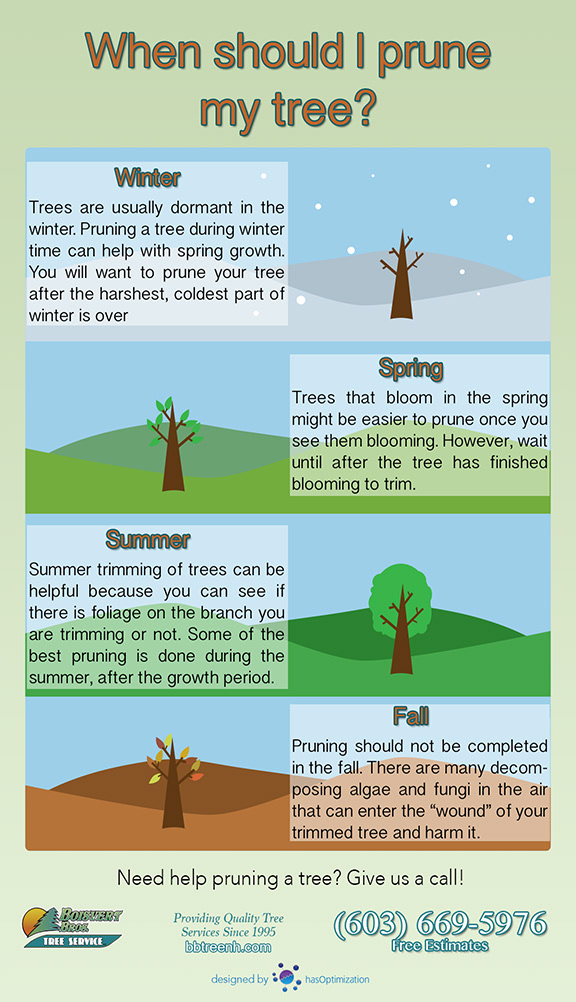Make Use Of Tree Trimming Strategies To Form And Invigorate Your Landscape-- Discover Exactly How These Approaches Can Improve Your Exterior Setting!
Make Use Of Tree Trimming Strategies To Form And Invigorate Your Landscape-- Discover Exactly How These Approaches Can Improve Your Exterior Setting!
Blog Article
Post By-
When it concerns developing a landscape that flourishes, understanding the art of tree pruning is a must. Envision being able to form your trees with precision, guaranteeing their vitality and elegance for several years to find. By learning the important techniques for proper cuts, timing, and structural training, you hold the key to a growing outside room that will thrill all who encounter it. Yet just how do these pruning methods really impact the wellness of your trees and the general landscape visual?
Appropriate Pruning Cuts for Tree Health
When it comes to maintaining the wellness of your trees, making proper trimming cuts is crucial. Wrong cuts can result in condition, insect infestation, and total tree decrease. To ensure the vitality of your trees, always start by utilizing sharp, clean tools to make specific cuts.
Begin by identifying https://www.safetyandhealthmagazine.com/articles/19948-covid-19-pandemic-osha-cdc-issue-guidelines-for-ag-industry , a swollen location where the branch connects to the trunk. Cutting simply outside https://gas-rock-dig-or-die17284.blog-a-story.com/10471753/stump-grinding-or-stump-elimination-which-solution-is-suitable-for-your-landscape advertise proper recovery and reduces the threat of infection. Avoid leaving stubs as they can welcome bugs and illness into the tree.
Remember to make cuts at a minor angle, sloping away from the trunk, to prevent water from pooling on the wound. Furthermore, remove any dead, harmed, or going across branches to improve air flow and sunshine penetration.
Timing and Frequency of Pruning
To maintain the wellness and structure of your trees, understanding the optimum timing and frequency of pruning is crucial.
The best time to trim trees is usually throughout the inactive season in late winter season or early springtime. Trimming throughout this period helps promote new development once the tree begins budding in the springtime.
Nevertheless, some trees, like spring-flowering ones, are best pruned right after they end up blooming to stay clear of cutting off next year's flower buds.
Routine pruning is crucial, yet the frequency relies on the tree varieties and its growth rate. For the majority of trees, a yearly evaluation to remove dead, unhealthy, or crossing branches is recommended. Youthful trees might need even more frequent pruning to establish a solid framework, while fully grown trees may just require upkeep pruning every couple of years.
Prevent trimming throughout the fall when diseases are much more conveniently spread out, and avoid hefty pruning during the summertime when the tree is actively growing.
Training Young Trees for Structure
For developing solid and healthy and balanced trees, training young trees for optimal framework is important. By shaping a tree when it's young, you established the foundation for a strong and aesthetically appealing mature tree.
Begin by recognizing the main leader, which is the main upward-growing branch. Encourage the main leader's development by trimming away competing leaders, aiding the tree create a solid main trunk. Furthermore, remove any kind of branches that expand internal or downward, as they can create architectural concerns as the tree grows.
It's important to room out lateral branches equally around the trunk to advertise balanced growth. As the tree matures, remain to monitor its development and prune as needed to preserve its form and framework.
Correctly trained young trees are less most likely to create weak crotches or chock-full branches, reducing the risk of damage throughout tornados. Investing time in training young trees will settle with a wonderfully structured and resilient tree in the future.
Conclusion
Now that you have grasped the essential strategies of tree pruning, your landscape gets on its way to flourishing. By using sharp tools, making accurate cuts, and correctly timing your pruning sessions, you are guaranteeing the health and wellness and long life of your trees. Keep in mind to regularly inspect and preserve your trees to keep them thriving. With your newly found understanding, your landscape will certainly continue to expand wonderfully for several years to find. Maintain the great work!
